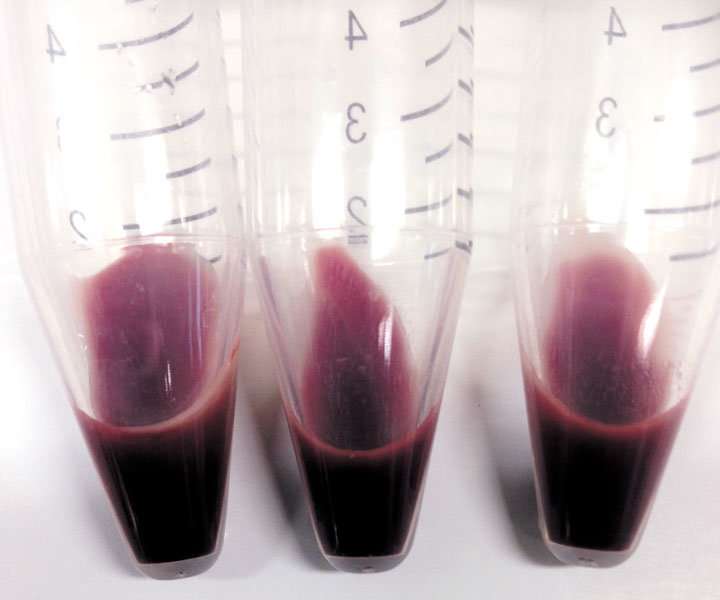Blood factories closer to reality

Blood cells grown in large vats from a starter stock of stem cells could one day supplement or even replace blood taken from human donors. However, existing protocols for making red blood cells (RBCs) in the lab can't be easily scaled up to produce the volumes needed to meet demand.
Now, A*STAR scientists have optimized the molecular recipes and growth-supporting microparticles needed to prepare and sustain billions of stem cell-derived RBCs in industrial-scale manufacturing vessels known as bioreactors. They have shown that transient activation of a key signaling pathway can dramatically boost efficiencies across a range of starting materials.
The system is still nowhere near producing the 1–2 trillion RBCs found in each 'unit' of donated blood—but it's getting close. And soon, Jaichandran Sivalingam, a research scientist at A*STAR's Bioprocessing Technology Institute (BTI), expects the platform to help solve the dual problem of supply shortages and transmissible infections that undermine transfusion medicine.
Jaichandran and his colleagues from Steve Oh's Stem Cell Bioprocessing research group previously developed a system for transforming induced pluripotent stem cells into RBC precursors under the kinds of conditions needed to keep enormous numbers of cells alive and healthy. The technique worked, but it wasn't very robust. When applied to multiple stem cell lines, the research team, which included collaborators from Jonathan Loh's group at the A*STAR Institute of Molecular and Cell Biology, recorded wildly different RBC differentiation efficiencies.
To find out why, the researchers searched for factors that enhanced the first step of the differentiation process. They found that a drug activator of the Wnt/β-catenin pathway, which regulates cell fate decisions, helped coax the reprogrammed stem cells into forming early blood progenitors. They added this drug to their protocol and produced up to 60,000 blood precursor cells from each stem cell within about 50 days in culture—a 40-fold improvement over the team's prior approach.
There are still hurdles the method needs to overcome. The system, which was described recently in the journal Haematologica1, used a semi-solid, gelatinous growth medium, "which would be challenging for scale-up," Jaichandran explains. Since the paper came out, though, "we have made significant improvements," he says, and the A*STAR scientists can now produce around 1.5 billion blood precursor cells in a flask about as large as a travel-sized shampoo bottle.
Next up, says Jaichandran, will be full-capacity, liter-sized tanks. "We are working to achieve ultra-high density cultures of RBCs in controlled bioreactors."
More information: Jaichandran Sivalingam et al. Improved erythroid differentiation of multiple human pluripotent stem cell lines in microcarrier culture by modulation of Wnt/β-Catenin signaling, Haematologica (2018). DOI: 10.3324/haematol.2017.180919




















